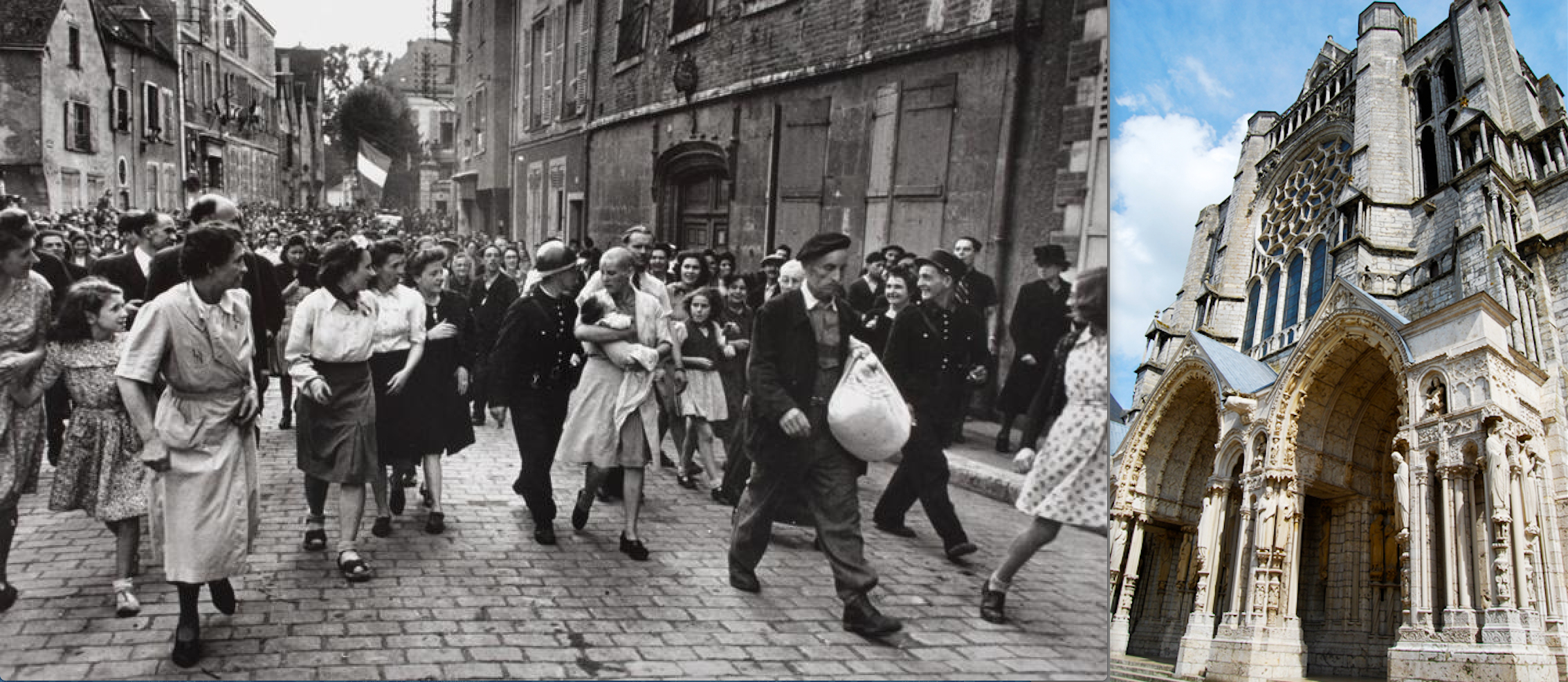THOMAS L. WOLFE (1894–1974)
The Rev. Thomas Lyons Wolfe was born on December 4, 1894, in Lost Nation, Iowa. His parents were John Buckley Wolfe, an Irish-Catholic farmer, and Mary Lyons Wolfe. He had eight siblings: John Vincent (b. 1888), Irene Mary (b. 1891), Edward Lyons (b. 1892), Frances Lyons (b. 1896), Richard Lyons (b. 1898), Paul Joseph Lyons (b. 1900), Eugene Maurice (b. 1902), and Cyril Dennis (b. ca. 1906).
Wolfe’s World War I draft registration card, dated May 31, 1917, lists him as a farm laborer and describes him as being of medium height and slender build, with blue eyes and dark hair.
Detail from Thomas L. Wolfe’s World War I draft registration card
Little is known about Wolfe’s early career in the church. He became a priest about 1923 and served in several parishes, including at Centerville, Appanoose County, and Kinross, Keokuk County, both in Iowa.
In July 1925, the bishop of the Catholic diocese of Davenport appointed him as an assistant at Saint Mary’s parish in Fort Madison. A year later he delivered the sermon at the funeral of his first cousin, Sister Scholastica of the Order of Sisters of Mercy.
In May 1939, Wolfe was assigned to Saint Patrick’s parish in Burlington. On January 13, 1941, in Des Moines, Wolfe entered military service as a chaplain. He trained at Camp Bowie, in Texas. On February 12, 1944, he left for Europe, where he served as chaplain of the XX Corps, which was part of the Third Army, commanded by General George S. Patton. Wolfe’s rank was colonel.
An Associated Press story in August 1944 related that Wolfe and his jeep driver, Sergeant John C. DeWitt, of Freeport, Pennsylvania, were among the first Americans to enter the Chartres cathedral after the arrival of Patton’s men. Chartres is about fifty miles miles southwest of Paris; its Gothic-style cathedral was constructed between 1194 and 1250. According to the report, Wolfe and his driver came under sniper fire on their approach to the church. “I could see no damage [to the cathedral] except [for] a few bullet marks,” Wolfe said. The story continued: “During the successful battle to drive out snipers, he related, two middle-aged French women remained alone at devotions before the altar of the Virgin Mary.”
Allied liberation of Chartres, 1944 (Robert Capa); Chartres cathedral (Danee Gilmartin)
Later in the month, Wolfe assisted the Archbishop of New York, Francis J. Spellman, in a Catholic Mass held in the woods at Mars-la-Tour. Spellman was then military vicar to the armed forces; in 1946 he became a cardinal. A memoir by one of Patton’s soldiers recalled that the “Mass was held despite the heavy rain and mud, and my Catholic buddies were thrilled to be a part of it, especially since it was celebrated by this well-known cleric [Spellman], who wore his elegant robe during the service, even in the mud.”
Wolfe returned to the United States on February 24, 1946, and was honorably discharged. On June 13, 1946, the Most Rev. Ralph L. Hayes, bishop of the Catholic diocese of Davenport, installed Wolfe as the pastor of Saint Mary’s parish in Riverside, Washington County. He replaced the Rt. Rev. Msgr. Bernard Jacobmeier, who had held the position for more than forty years.
In Riverside, Wolfe ran all aspects of the parish, including the Catholic schools. One of his first major acts as pastor was to create a Parent-Teacher Association at Saint Mary’s parochial school.
In June 1955, Wolfe was transferred to Saint Boniface parish in Clinton, Iowa. He died on February 19, 1974, in Iowa, and is buried at Saint James Cemetery in Toronto, Clinton County.


